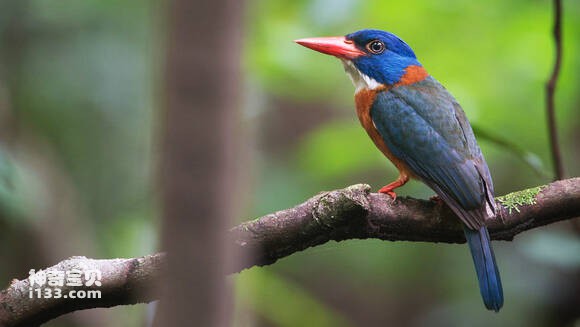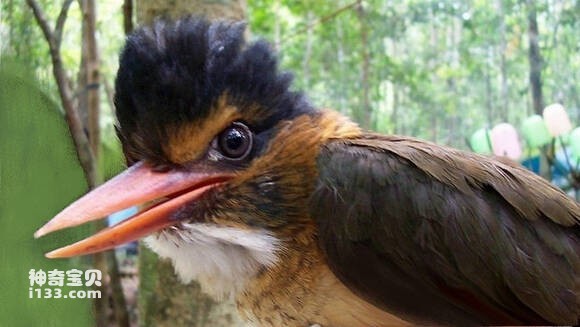Actenoides monachus
IUCN
LCBasic Information
Scientific classification
- name:Actenoides monachus
- Scientific Name:Actenoides monachus,Green-backed Wood Kingfisher
- Outline:Climbing birds
- Family:
Vital signs
- length:About 31 cm
- Weight:No textual research information is available
- lifetime:No textual research information is available
Feature
Distribution and Habitat
It is found only on the Sulawesi Islands in Indonesia.
It is usually found in lowland rainforests, dense forests, and near river banks, ranging from sea level to about 900 m in height.
Appearance
The green back emerald is 31 cm long. Adult males have a dark blue or turquoise head with black eyes first. The bird's cheeks are slightly more blue, clearly marked with the distinction between the top and the head, and its chin and throat are white. The neck is narrow with a dark red collar separating the blue head from the back. The back, wings and tail are black olive green. Chest dark red connected to collar. Side and tail red with a slight whiteness. The underside wings are pale yellow and cinnamon red. Bright red mouth. The irises are dark brown and the legs are orange-red. Female and male birds are not very different. But the forehead and eyebrows are slightly wider and reddish orange in color. The young bird resembles the female, but has a darker chest. The chin is pale yellowish-gray and the mouth is yellow.
There are regional differences in subspecies. Green-backed emerald of northern Sulawesi having a dark blue head, a dark red chest, a red-orange belly, and a blue t
Details
Actenoides monachus, Green-backed Wood Kingfisher, has two subspecies, one of which is the black-headed kingfisher.

The green-backed emerald lives on the quiet solitary bird. Their sound is like a long whistle. A different bird song can also be sent while hunting: this is the same "rark-rark-kraa" sound as the frog's, and a warning call is also made when feeling unsafe.

Green-backed jadeite is generally alone or couples to hunt together. Like most forest kingfishers, they are completely carnivorous. Often searching for prey in leaves or dirt. The main food is large centipedes and beetles. It also eats small vertebrates such as small fish, small snakes and lizards. Drill holes in tree trunks for nests. The breeding season is from March to April. The size and number of eggs and the duration of incubation are not yet known.

Listed in the International Union for Conservation of Nature (IUCN) ver 3.1:2008 Red List of Birds.
Protect wild animals and eliminate wild meat.
Maintaining ecological balance is everyone's responsibility!








